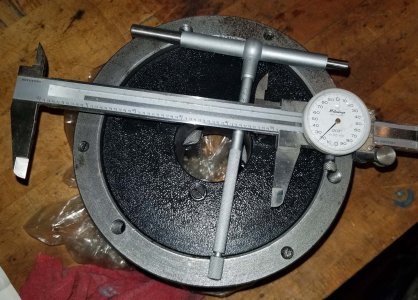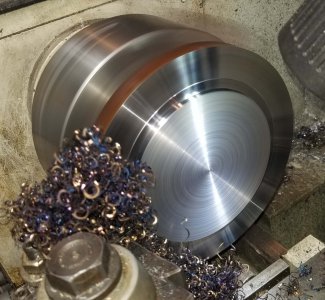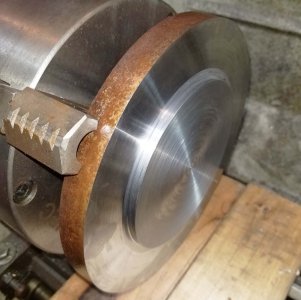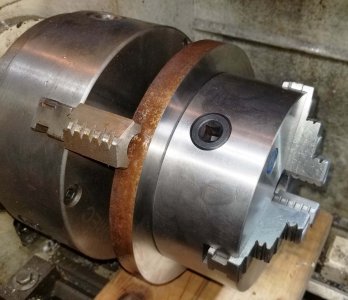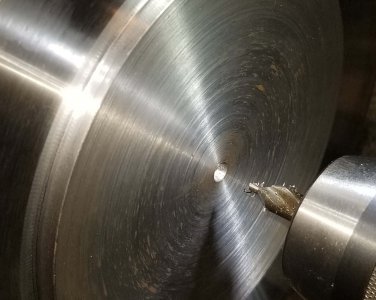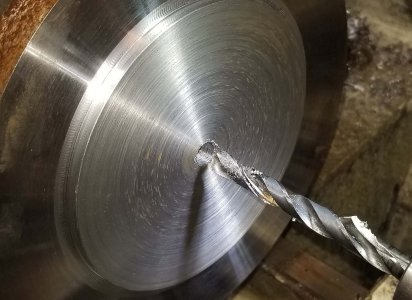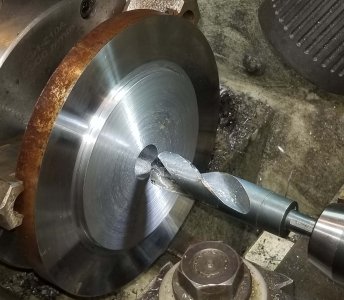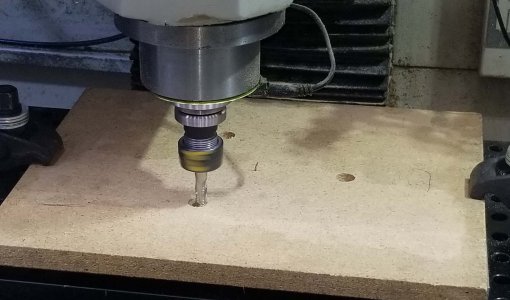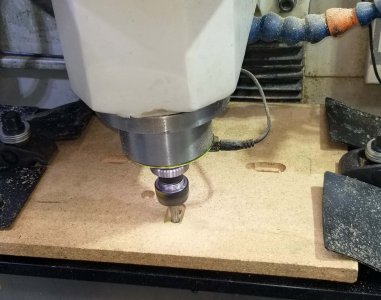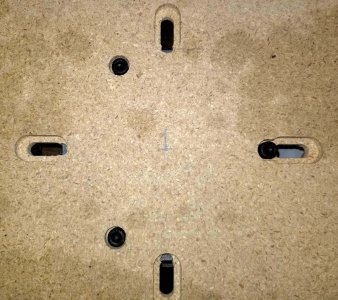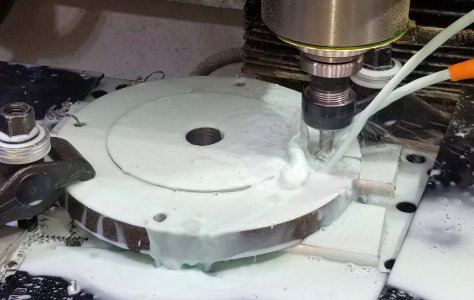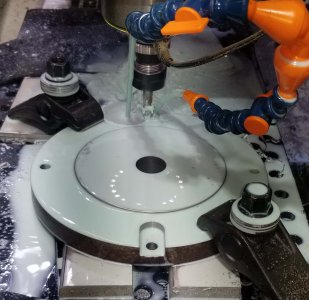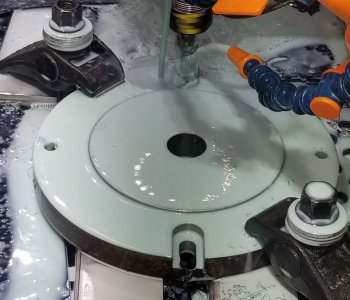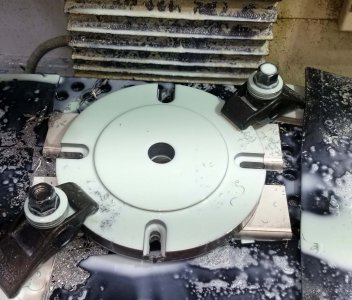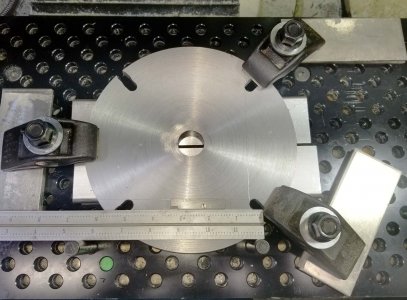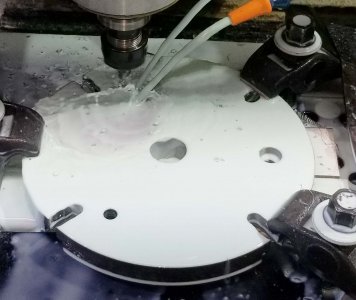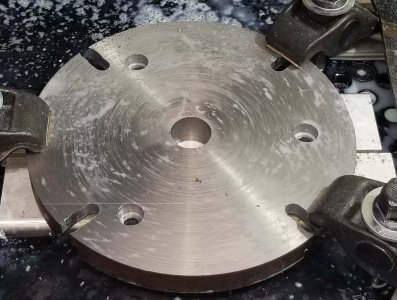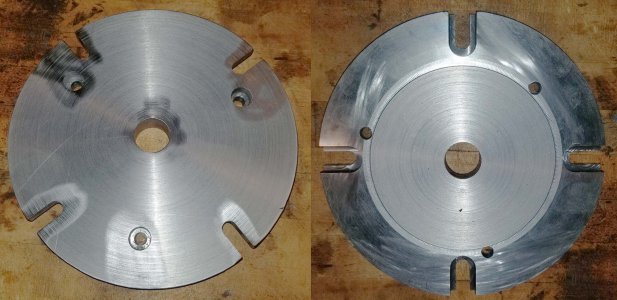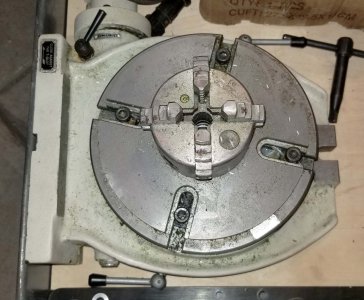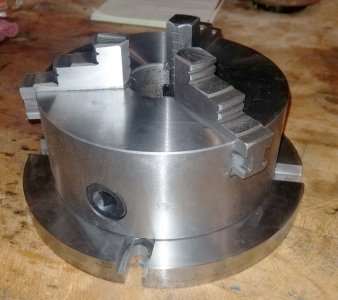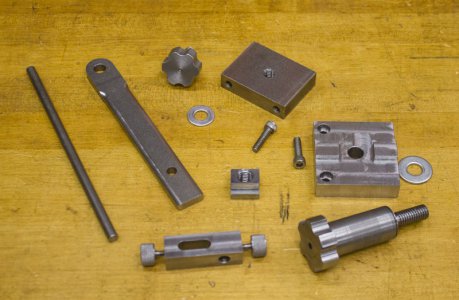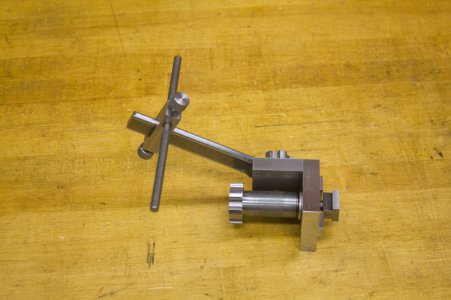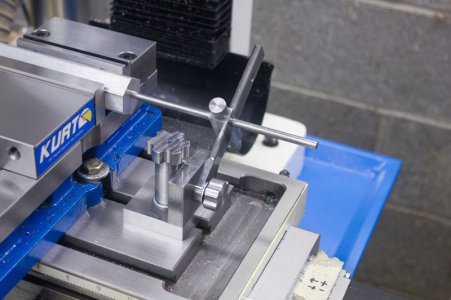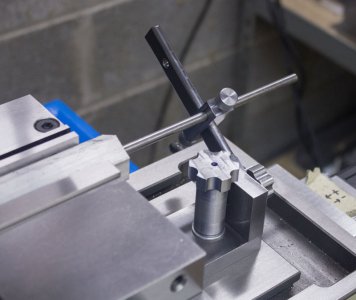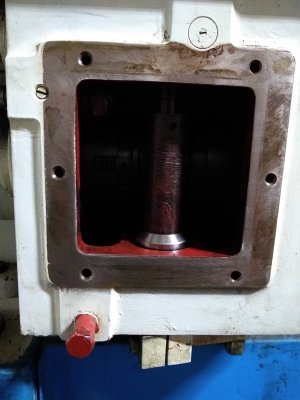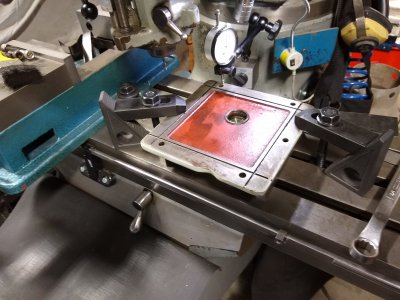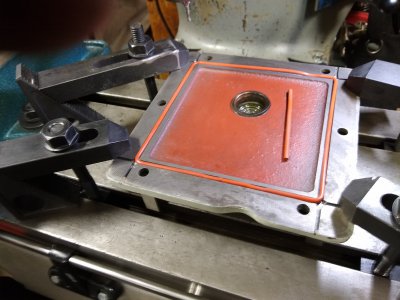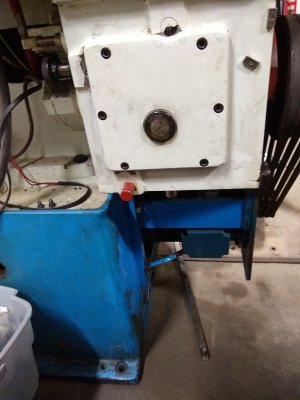POTD was making a backing plate for a 6" 3-jaw chuck. My Tormach mill has a 4th axis; basically a rotary table that's programmable. I have a small 4-jaw chuck and a 5C collet holder, but wanted to be able to mount a 3-jaw also. Bought a no-name 3-jaw off eBay about a year ago, plus an 8" CRS round 1" thick.
Started by measuring the diameter of the register with telescoping gauges and a caliper.
View attachment 325269
Chucked up the 8" round on my G0709 lathe. It has an 8" set-true chuck, adjusted to dial in the OD within 0.0005" and faced. Then flipped and faced the opposite side. Once both sides were faced, continued facing to leave the register for the chuck.
View attachment 325270
Register all finished. I faced the surface and left the register surface behind, stayed short of the diameter by around 0.030". Once I had the register at depth (0.200"), started to turn the register OD. Crept up on my number and checked with the chuck. Went a little deep on the face of the plate at the base of the register so the outside/back side of the chuck would lay on the plate, not the area at the register (register is just for radial positioning).
View attachment 325272
Checking the fit with the chuck.
View attachment 325271
Drilled a 1" through hole in the mounting plate. Started with a center drill, then a 3/8" and a 1". This hole will be for clearance only. The 5C collet mounting arbor has a ground MT3 / 3/4" arbor for centering the 5C collet holder on the 4th axis. My plan is to use the same arbor for centering the 3-jaw. Set the arbor in the rotary table, set the 3-jaw in place over the arbor. Tighten the chuck on the arbor and fasten the chuck to the rotary table with bolts/T-nuts.
View attachment 325273View attachment 325274
View attachment 325275
Tormach CNC equipment uses controller software called PathPilot. Tormach has an on-line version of the software which is great for writing routines and proving them out on the screen. However, I still go with a particle board prototype on occasion.
View attachment 325276
View attachment 325277
The 3-jaw chuck has three mounting holes at 120 deg. apart. The rotary table has 4 T-slots. I'm a little out-of-date on my calculus to take the differential of a formula with 3 peaks on a circle vs. 4 peaks to find the optimal rotary spacing between the two. So, ran the two routines in the particle board with one of the holes/slots lined up. The mounting plate would have countersunk pockets for the chuck and countersunk slots for the rotary table. These features are on opposite sides of the mounting plate, so the plate will have to be flipped between routines.
You can see on the RH hole/slot that they slightly overlap. I figured the best spacing would be putting one of the chuck holes evenly spaced between two of the slots. That'd put one hole at 45 deg. to the adjacent slots and the other two holes 15 deg. from their closest slot.
View attachment 325278
I ran the 4-slot routine first. Found center using a passive probe on the register. The CNC routine used 3 tools: spotting drill, 11/32" drill bit and a 3/8" roughing end mill.
Spot drilled, through hole drilled and milled a 3/4" wide pocket for cap screws (to screw to T-nuts on the rotary table).
View attachment 325279
View attachment 325280
View attachment 325281
First side done.
View attachment 325282
I flipped the mounting plate and scribed a line along the tangent point of two of the T-slot holes. Then stuck a couple of dowel pins in the Tormach's fixture plate, laid a scale against the dowels, and an adjustable parallel on top of the plate. Rotated the mounting plate until the scribed line lined up with the top of the parallel, then clamped the plate in place.
View attachment 325283
The chuck pocket hole routine used the same three tools: spotting drill, 11/32" drill bit and a 3/8" roughing end mill
View attachment 325284
View attachment 325285
Finished backing plate. Ran the edges over a Scotch-brite wheel and stoned the back side of the chuck through holes.
View attachment 325287
My 4th axis has the 4-jaw on it for now, but . . .
View attachment 325289
Finished mounting plate with the 3-jaw mounted.
View attachment 325288
Thanks for looking,
Bruce
